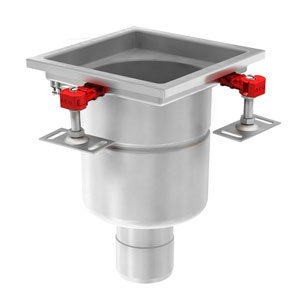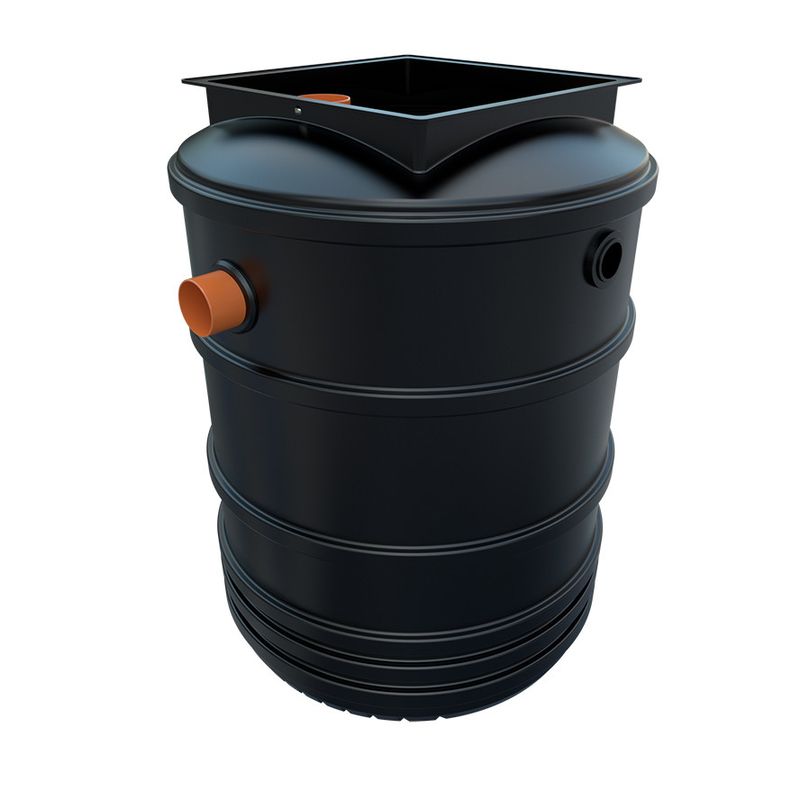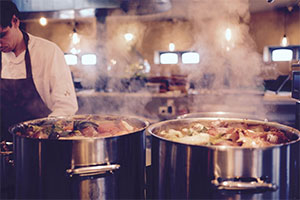Kitchens are fast, busy environments that need to operate to strict time schedules. So you must install the correct floor drains for commercial kitchens. This will prevent headaches further down the line with blocked or broken drainage.
We’ve created this guide to help you know what you need for commercial kitchen floor drainage. Learn what products are best suited to a busy commercial kitchen environment. This way, you can ensure that it’s right the first time.
Table of contents
- Floor drains for commercial kitchens
- Kitchen channel drains
- Things to consider when buying commercial kitchen floor drains
- How to deal with kitchen drainage problems
Floor drains for commercial kitchens
Grade 304 stainless steel is one of the best materials for a busy commercial kitchen environment. It is easy to sanitise and maintain with little effort.
The ACO Gully 157 Grade 304 range fits these needs perfectly. Complete with professional and practical stainless steel drainage at a competitive price. Just what you need for a high-quality commercial kitchen drainage system.
Why do commercial kitchens use stainless steel?
Stainless steel, as mentioned, is easy to sanitise and maintain, but that’s not all. It is also highly durable and corrosion-resistant. So there is minimal worry about wear and tear when something runs down the drain.
Kitchen channel drains
You aren’t limited to choice when it comes to commercial kitchen floor drains. In fact, there’s an excellent selection for busy commercial kitchens.
The ACO kitchen range offers high-quality channel drainage. Perfectly suited to a frantic and messy kitchen environment. Complete with commercial floor drain grates to minimise the risk of large food debris from falling into the system.
No matter the size of the kitchen, these channel drains will be able to do the job to meet your commercial kitchen floor drain requirements.
Things to consider when buying commercial kitchen floor drains
Before you buy, you’ll need to be aware of particular factors when choosing commercial kitchen floor drains.
Know the regulations for commercial kitchens
You must follow government regulations for commercial kitchens as these standards ensure you perform safe practices.
To quote from current government standards in Approved Document H:
“Drainage serving kitchens in commercial hot food premises should be fitted with a grease separation complying with BS EN 1825-1:2004 and designed in accordance with BS EN 1825-2:2002 or other effective means of grease removal”
Approved Document H, in particular, covers drainage and waste disposal. So familiarise yourself with the appropriate information to ensure your commercial kitchen drainage is up to standard. Keeping these documents in mind will also make sure you are aware of any changes should they happen in future.
So, speaking of grease traps!
Don’t forget grease traps
Another important issue to consider in a kitchen is how to separate fat and grease. This is especially important when following government standards.
One solution would be the Fogi Fat and Grease Interceptor. Its design conforms with BS EN 1825, the British Standard for Grease Separators. This grease trap will effectively intercept FOGS before they enter a wastewater drainage system. FOGS refers to:
- Fats
- Oils
- Greases
- Solids
This supports the effectiveness of the kitchen drainage system and the final treatment process. You can use the Fogi Fat and Greaser Interceptor for larger kitchens and restaurants. It is also suitable for industrial food processing applications.

Understand why you need commercial kitchen drains
Without a kitchen drain, you’re increasing the risk of:
- Slips and trips
- Harmful bacteria growth (e.g. E.Coli) and contamination
- Foul odours
- An influx of pests (Rats, cockroaches etc)
That’s why kitchen drains are vital for how commercial food spaces function. The kitchen drainage systems transfer water from the floor surface, move it through channel drainage, and finally lead it to the disposal area.
Types of kitchen drains for commercial kitchens
You already know stainless steel is the go-to material, but what are the options for the type of kitchen drain?
Well, as mentioned above, we have an array of channel drains with floor drain grates. These long, narrow channel drains are perfect for preventing large food waste from entering the system. They’re also easy to clean, maintain and customise for your requirements.
With that said, slot drains are also a popular choice. Their design is more subtle than a channel drain, and they don’t typically come with a great. Despite that, they still perform well in commercial kitchen spaces.
What’s important is you take a look at your options and find the right ones for you.
How to deal with kitchen drainage problems
By pouring grease and fat down the drains regularly, it can build up to create a blockage. Common signs of this are a foul smell, water not draining away and odd gurgling sounds. So, how do you deal with these?
If your trusty plunger isn’t doing the trick, visit our guide. Learn ‘Everything you need to know about blocked drains‘ to find out how to clear blocked kitchen drainage.
If you need to know more about kitchen drainage or other forms of channel drainage solutions, check out our other help and advice or contact our customer service team for support.














